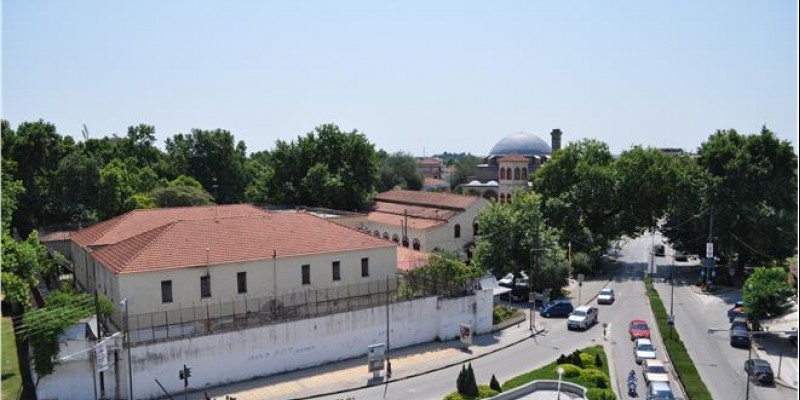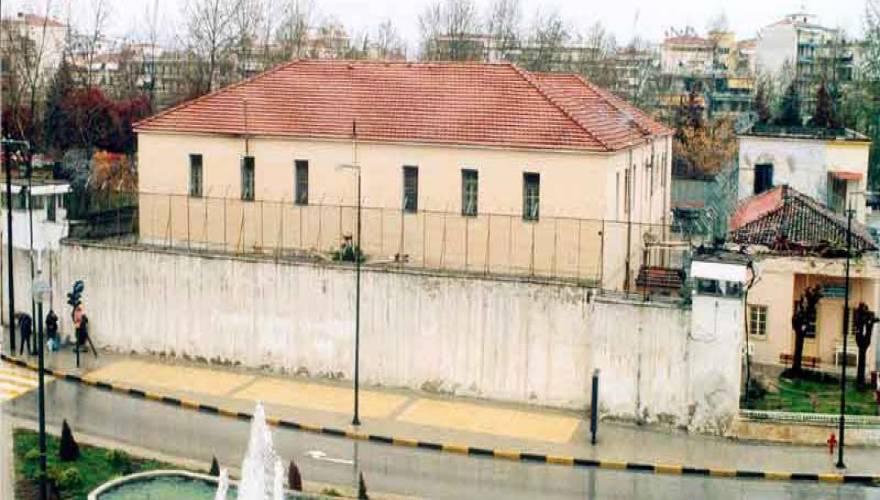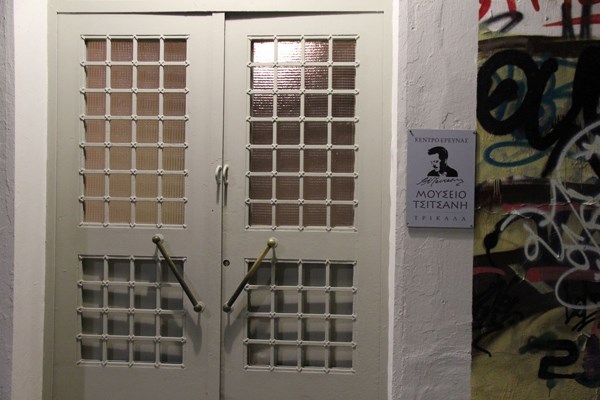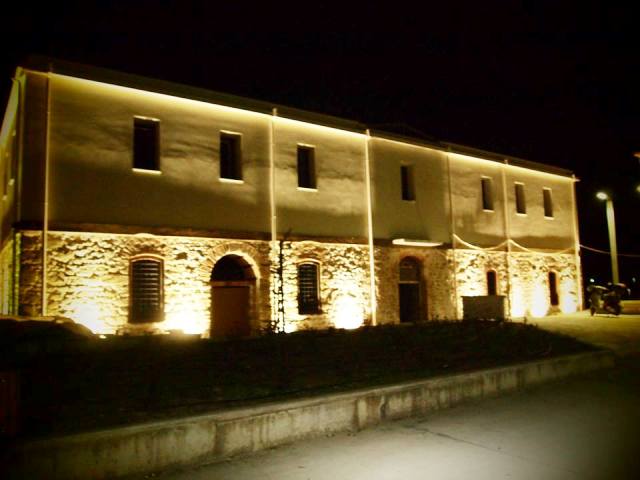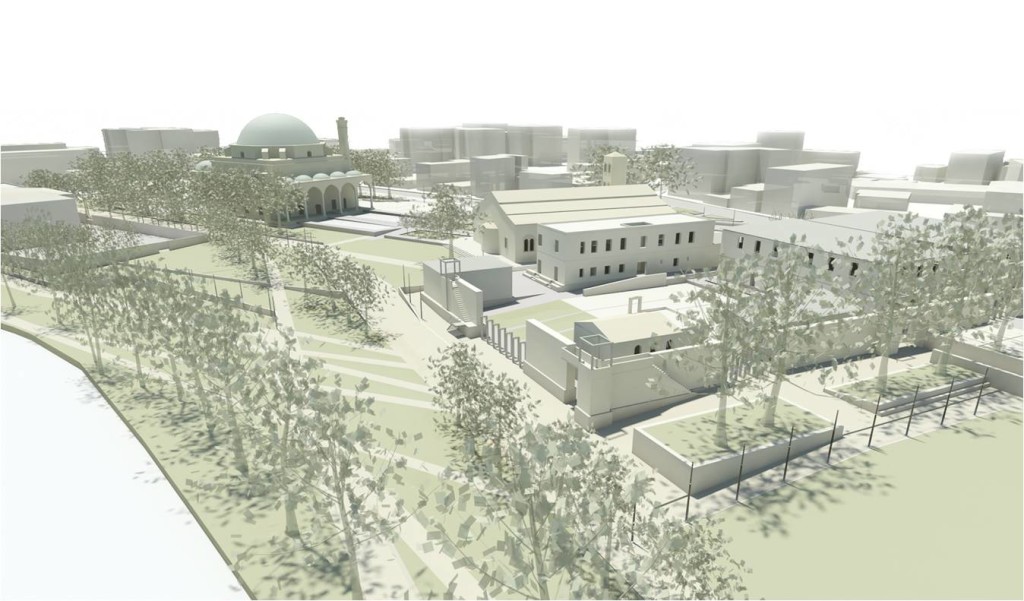In the 17th century, in the area where prisons were later built, the visitor-traveler Evli Tselepi described the following:
“Out of the thirty-three countryside (resorts), most famous for walking was the countryside of Osman Shah. The natural idyllic atmosphere, especially in the summer sunsets, was shaped by a nearby nice stone bridge, and the well, which with its buckets fed the baths with water. There, there was the big stone dam with the artificial pond and the mill-channel, which, like a snake in fruit and puddings, fed a mill with water”.
Later, after 1881 and the incorporation of Trikala in Greece, the leaving of Muslims and economic distress, the hamam that was built in the 16th century became inactive.
In 1895 the Greek state built prisons. According to the historian, Mr. Maroula Kleafa:
“The original prison building had ten chambers – five on the ground floor and five on the floor where you climbed with an internal wooden staircase – and a small hospital. In the large courtyard, surrounded by a tall wall, there was a toilet and a tub.
In 1902, just seven years after their erection, Prisons, due to the incarcerated behavior of the prisoners, suffered great damage, with the result that the then Secretary of State for Torture Justice described them as “the most vile and most atrocious prisoners of the state” and promised to grant 20,000 drachmas To be repaired “.
And she continues:
“The total lack of maintenance of prisons resulted in 1918 the upper floor chambers being in a miserable state. Due to repeated attempts to escape the prisoners – they opened burrows, waved floors and slung the inner door, the building suffered many damage. In 1923 Glykofroidis prison inspector recommended to the Ministry of Justice the grant of 100,000 GRD for the repair of prisons.
In April 1954, the earthquake that hit Trikala caused severe damage to the prison building. The Ministry of Justice then made a grant of 500,000 drachmas and the building underwent a radical renovation, which lasted until the beginning of 1957. The renovated building, which included eight large chambers, was inspected in December 1956 by the then Minister of Justice Papakonstantinou.
The Prison Band for more than a century is linked to the history of the city of Trikala. In addition to criminal prisons, it was also used as a detention facility for political prisoners in various phases of our country’s political history, but also during the German occupation.
In 2006 the prison were closed. They were transferred to a new location, in the area of ”Balkoura”, three kilometers north of Trikala. They remain criminal offenders but are now outside the urban urban fabric. This has led to a debate about what will be housed in this area. Finally, the housing of the Research and Creation Center – Tsitsanis Museum is decided.
And while the work began, based on a comprehensive study of the whole site, with the Mosque and adjoining church, next to the river, the archaeological excavation brought to light the old hamam. Therefore, with new studies, the implementation of two separate but one-shot subprojects was promoted:
One is the “Protection and Emergence in the Old Prison Building of Trikala”, which is carried out by the Department of Antiquities of Trikala, while the second subproject concerns the “Repatriation of the old building of the old prison of Trikala – Research Center Vasilis Tsitsanis” Trike. Total initial budget of € 2,816,109 million
Upon completion of the project, the building turns into an archaeological site with an architectural and historical structure on the ground floor and an area with references to the local composers and songwriters on the upper floor. The two exhibitions will operate separately, but both will contribute to the development of the local area and the tourism of the city.
With the completion of the works in late September 2016, it is attributed to the trikals and visitors a space of timelessness and multiculturalism: a purely archaeological site with organized architecture and historical structure on the ground floor and a place with references to the creation of three composers at the top floor. Separate entities are therefore created with improved traffic conditions that will contribute to the city’s tourist visibility as well as to the development of the local peripheral area.
VISITING TIMES
the Museum and th Ottoman Baths are ppen evewry day from 09:00 to 15:00, with FREE ENTRANCE for everyone
Tel: (0030) 2431077977
ΕΧΗΙΒΙΤΣ
At the ground, in the bath area, were preserved evidences of olod walls and the way of transferring hot water, such as represantation of Ottoman hamams.
There were also kept up types of sinks and “Tears of Allah”, with memorabilia of Old Prison (notes, books, catalogues, ).
At the foirst floor the 4 halls contain:
Hall 1:
Timeline and Musicline o Vassilis Tsitsanis.
Datas of his most imprtant partnerships
Hall 2:
Plentiful and rare datas of a collction by K. Hadjidoulis (photos, lyrics, old newspapers, pictures etc.)
Rare 78 and 45 discs
Modern Juke box
Documentary Film
Representatives of disc covers
Hall 3:
Mentions and Αναφορά και relation of the whole building with του έργου με τον confinement, sthe Sakaflia’s myth, the relation between prison and rebetiko song, etc
Old prison telephons with surprises…
Mention to the other “big 5” musicians form Trikala: k. Virvos, A. Kaldaras, Chr Samoladas, Chr,. kolokotronis, D. Metropanos. Municipality of Trikala prepares the “House of Trikalian Musicians”, in order to be a distinct place of nusical Ο Δήμος Τρικκαίων ετομάζει και το “Σπίτι Τρικαλινών Δημιουργών”, ως ξεχωριστό πόλο μουσικής feast.


